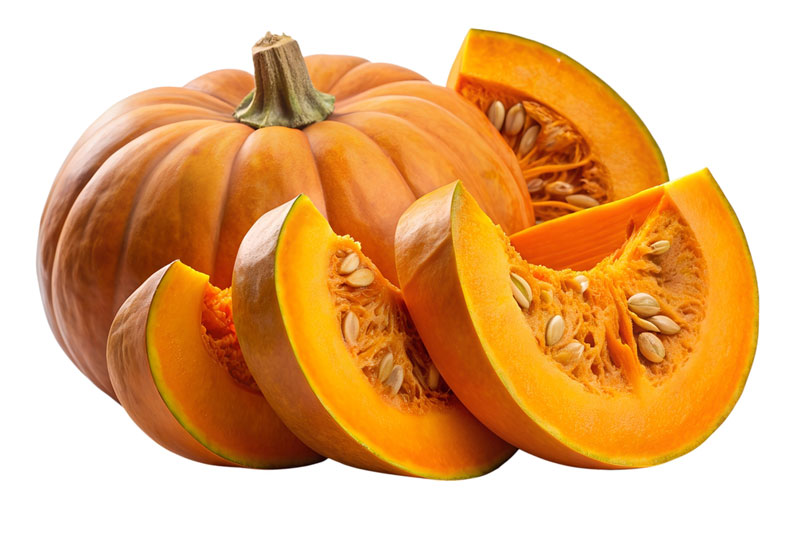Have you ever wondered if our feline friends can enjoy pumpkin, just like we do during autumn? The answer is yes, cats can eat pumpkin, and it can actually be good for them! This delightful orange vegetable is not only tasty but can also provide some health benefits for our furry companions.
Just like we look forward to pumpkin spice lattes and pumpkin pie, our cats may enjoy a little pumpkin treat too. It’s a natural food that can help with things like digestion. While it might not be a regular part of their diet, a little pumpkin here and there can be a flavorful addition to their meals. Plus, it’s a great way to keep their diet interesting!
If you’re curious about how much pumpkin is safe for our cats, its benefits, and any potential risks, stick around! We’re going to explore everything you need to know about feeding pumpkin to your kitty.
You might also be interested in: Can Cats Eat Cooked Carrots?
Can Cats Eat Pumpkin?

When it comes to our furry felines, it’s always a good practice to understand what they can and cannot eat. Pumpkin is actually one of those foods that cats can enjoy safely. Packed with nutrients, it can contribute positively to your cat’s overall health. But we should remember, while pumpkin is safe, moderation is the key here.
Pumpkin has a high water content, and this can aid in keeping our kitties hydrated and happy, especially during warm months. It also contains fiber, which helps with digestive health. This can be especially beneficial if your cat struggles with hairballs or constipation. Pumpkin can help to keep things moving along smoothly!
When feeding pumpkin to your cat, it’s essential to stick to plain pumpkin without any additives. Canned pumpkin is generally better than fresh pumpkin. If you opt for fresh, make sure it is cooked properly. Avoid spiced or sweetened varieties, as some spices can be harmful to our pets. Always consult with your vet before introducing new foods into your cat’s diet.
How Much Pumpkin Can Cats Eat?
So, how much pumpkin should our cats actually eat? The quantity we feed our furry friends will depend on their size and dietary needs. Generally speaking, a teaspoon or two of plain pumpkin is a suitable amount for most cats.
It’s important to start off small and observe how your cat reacts. If they seem to enjoy the taste and don’t experience any stomach upset, you can consider adding a little bit more to their meal. We should always be on the lookout for any signs of distress or discomfort. If your cat experiences diarrhea or vomiting after eating pumpkin, that might be a clear signal that their tummy isn’t quite ready for it.
As with all treats, pumpkin should only be a small part of our cats’ diet. The bulk of their nutrition should still come from high-quality cat food that meets their specific dietary needs. Treats should make up no more than ten percent of their daily caloric intake. By keeping this balance, we can make sure our kitties are happy and healthy!
Consulting with your veterinarian before introducing any new food, including pumpkin, is always a smart idea. They know your cat’s individual health needs and can offer tailored advice. Ultimately, we’re all about keeping our furry friends safe and happy, and seeking professional advice is a step in the right direction.
Benefits Of Pumpkin To Cats
1. Digestive Health: One of the primary benefits of pumpkin for our cats is its high fiber content. Fiber aids in digestion, helping to prevent both constipation and diarrhea. Many cat owners find that pumpkin can be a great remedy for hairballs. By incorporating just a small amount into their diet, it can help the hair pass through their system smoothly.
2. Weight Management: For cats that struggle with their weight, some pumpkin can be a great addition to their meals. It is low in calories, which means we can fill up our cat’s bowl without overloading them with calories. This can help with portion control and satisfy their urge to snack without contributing to weight gain.
3. Nutrient-Rich: Pumpkin is packed with essential vitamins and nutrients, including vitamins A, C, and E, as well as potassium and iron. These nutrients can help support our cats’ immune system and overall health. By giving our cats a little pumpkin, we are also providing them with antioxidants that may help reduce inflammation.
4. Hydration: With its high water content, pumpkin can help keep our cats hydrated, especially if they tend to shy away from drinking enough water. The moist texture of pumpkin can be quite appealing, adding some extra hydration to their diet, particularly during the hotter months!
5. Flavor and Variety: Let’s face it; sometimes our cats can be picky eaters! Adding pumpkin to their regular diet can introduce different flavors and keep mealtime exciting. Cats appreciate variety in their food, and pumpkin can be a fantastic option that adds both nutrition and taste!
Dangers Of Feeding Pumpkin To Cats
Before we start tossing pumpkin in our cats’ bowls, we need to be aware of the risks involved. One of the primary concerns is the chance of gastrointestinal upset. You know your kitty best, and introducing any new food should be done with caution.
Overfeeding can lead to diarrhea, so moderation is crucial. Some cats may also suffer from allergies or sensitivities. Be on the lookout for any signs of discomfort or strange behavior after introducing pumpkin. If any adverse symptoms occur, stop feeding it immediately and consult your vet.
It’s essential to only feed plain pumpkin, avoiding any sweetened, spiced, or pie-filling varieties. Those sugary and spiced versions can contain toxic ingredients, such as nutmeg, which can be harmful to cats.
Also, remember that while pumpkin is safe, it should not replace a balanced diet. Cats are obligate carnivores, meaning they need meat to thrive. So, pumpkin should only be a supplemental treat, not the primary source of their nutrition.
Substitute Of Pumpkin For Cats
1. Sweet Potatoes: If pumpkin isn’t available, sweet potatoes can be a great substitute! They offer similar health benefits, including high fiber content and support for digestive health.
2. Carrots: Cooked and pureed carrots can also provide beneficial fiber and nutrients. Just ensure they are soft enough for our cats to chew!
3. Butternut Squash: Butternut squash has similar textures and flavors to pumpkin. It is equally nutritious and can serve as a great alternative.
4. Peas: Cooked peas are another great choice, packed with fiber and vitamins. They offer variety while being safe for our felines!
5. Green Beans: Lightly steamed green beans can provide fiber without a lot of calories, making it a perfect addition to our cats’ meals.
Can Cats Eat Pumpkin? Frequently Asked Questions
Can Pumpkin Help With My Cat’s Hairballs?
Yes! The fiber in pumpkin can help reduce hairballs by aiding in digestion and keeping the digestive tract smooth and functioning properly.
How Often Can I Feed My Cat Pumpkin?
A little pumpkin a few times a week is generally safe for most cats. Just be sure to stick to the recommended portion sizes!
What Should I Do If My Cat Doesn’t Like Pumpkin?
If your cat turns up their nose at pumpkin, don’t worry! There are plenty of other fiber-rich foods you can try introducing instead. Not every cat has the same taste preferences.
Is Canned Pumpkin Better Than Fresh Pumpkin?
Canned pumpkin is often a more convenient option. Just make sure it is pure pumpkin without added sugars or spices. Fresh pumpkin will work, but it does need to be cooked and pureed properly.
Can Kittens Eat Pumpkin?
Kittens can have small amounts of plain pumpkin once they are eating solid food, but always consult with your vet for guidance on their specific dietary needs.
Final Thoughts
In conclusion, pumpkin can be a delightful and beneficial treat for our cats when offered safely and in moderation. It can aid digestion, help with weight management, and even provide hydration. Just be sure to stick with plain pumpkin and always consult your vet before adding new things to their diet.
As we continue to care for our precious pets, let’s also keep exploring for new ways to make their lives enjoyable. For more insights, don’t forget to check out some of our other articles, like what happens when cats eat onions or whether cats can have lettuce. Together, we can make sure our furry companions lead happy and healthy lives!


